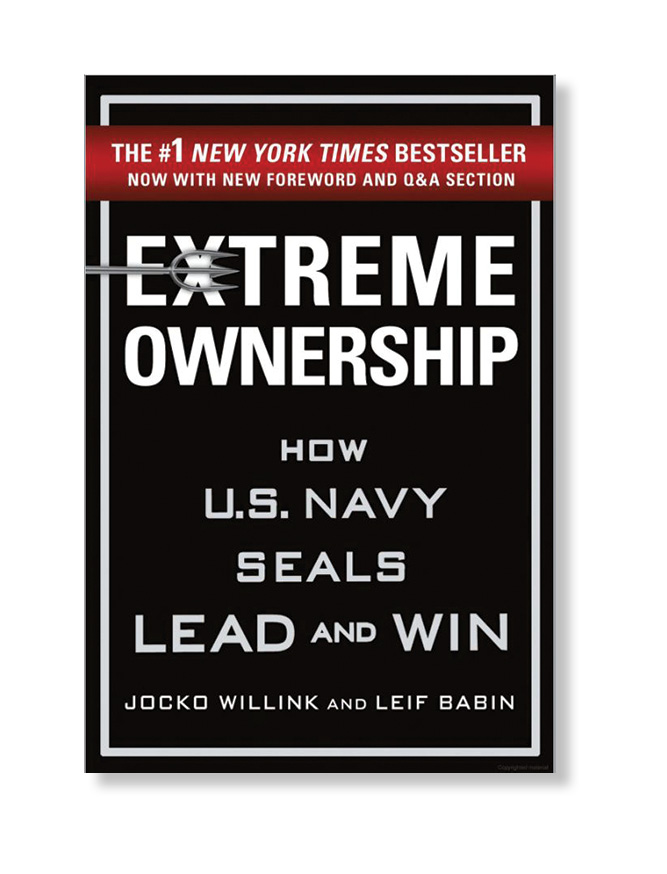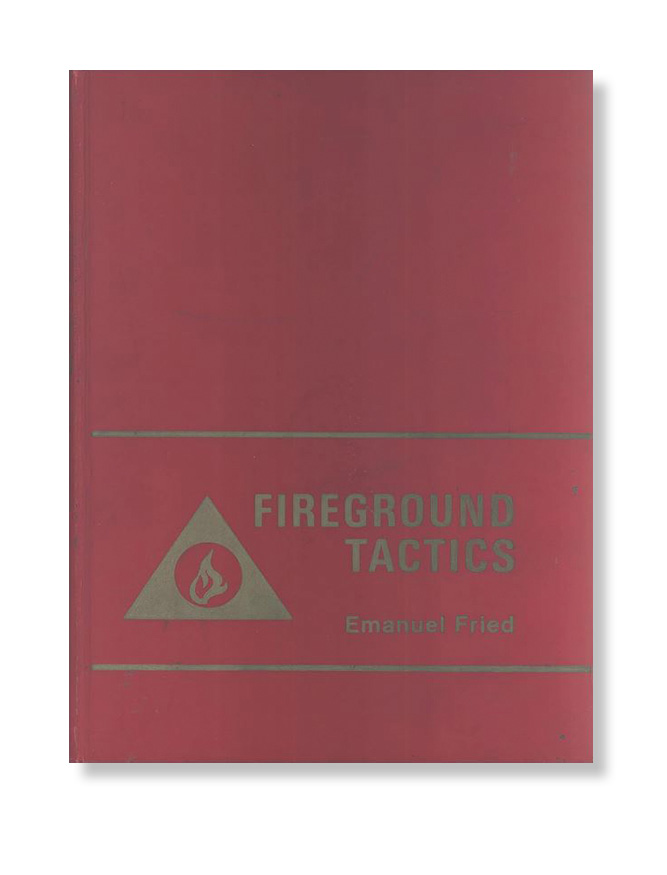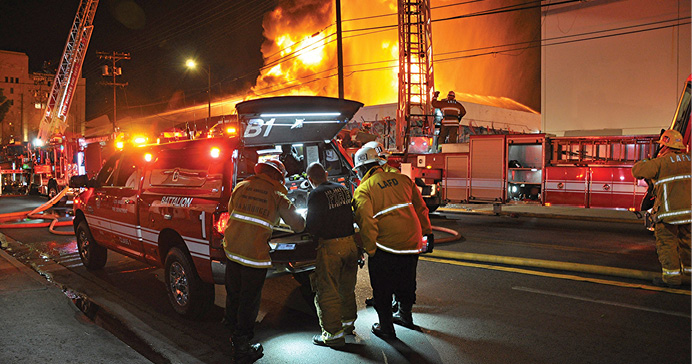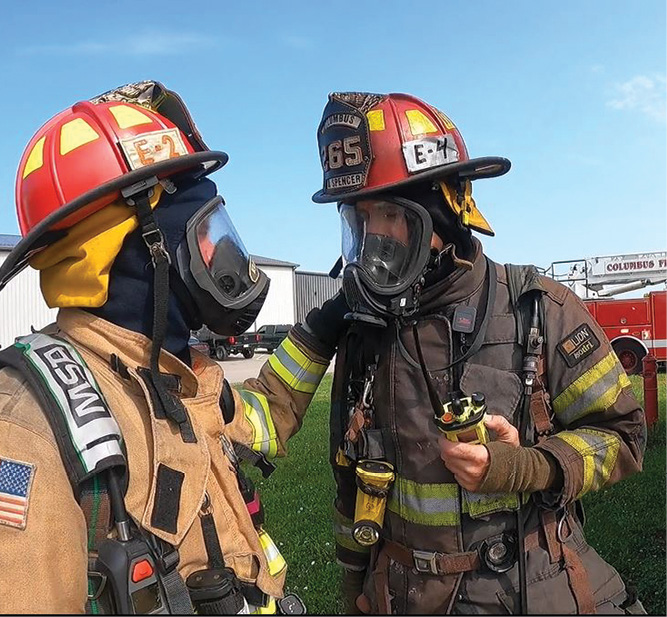By Anthony Kastros and Brian Brush
The concept of mission command has gained significant traction over the past few decades. Some might credit this to the military and the shift to a more dynamic and adaptive command model to meet post-9/11 threats. Others may speak to the power of efficiency that comes with decentralization of authority and communications. Regardless of the attribution or perceived benefit, from the corporate world to the fire service, as our up-and-coming firefighters become more educated, trained, and professional, the supervisory trust and empowerment must scale to meet it. If we fail to aim toward a mission command model, we will default to micromanagement of members and chaos in operations.
- Two-Pen Perspectives: The Tactical Gap
- The NIOSH 5: Beyond Firefighter Line-of-Duty Deaths
- Tactical Supervision for Known Rescues
- Civilian Rescue: The Reason We Exist
Mission command has been used by the U.S. military for decades. According to Army Doctrine Publication 6.0, Mission Command: Command and Control of Army Forces, “Mission command is the Army’s approach to command and control that empowers subordinate decision making and decentralized execution appropriate to the situation.” The military lives by the principle of decentralized command. The key to success is trust. Trust can only be developed through training and time. Jocko Willink may be the best-known agent for communicating mission command to the masses today1 (photo 1).
Use of the incident command system (ICS) is based on decentralization and the mission command philosophy. This requires specific standard operating guidelines (SOGs), training, and a commitment from the leadership of the organization to develop leaders at all levels to solve problems.
In our research for our Mastering Fireground Command text, we have found attempts to move fire incident commanders (ICs) to a more decentralized higher trust model as far back as 75 years ago. Emanuel Fried served as the chief of the 44th Battalion in Brooklyn, New York, in the late 1940s and early 1950s. When he retired in 1958, he wrote the legendary textbook Fireground Tactics2 (photo 2). In Chapter 30, “Command at Fires,” Fried speaks directly to paying attention to span of control and building trust with and clear expectations for your subordinate officers preincident:

1. Jocko Willink and Leif Babin’s book Extreme Ownership emphasizes decentralization of command. (Photos 1 and 2 courtesy of authors.)
The day of the iron fist is gone (and good riddance). In your command structure, avoid having more than 4 or 5 people reporting directly to you. Your span of control becomes limited beyond this number and efficiency will suffer.
To ensure total strategy, to ensure that competent orderly procedures will be carried out at places you cannot personally see and reach, you will use help. This help has been previously trained so that it is not necessary for you to personally instruct them in their job at the fire.
Calls have been made for mission command from our most legendary fire service ICs and our most influential modern warriors. The time to start shifting our practices was yesterday, but we can only control what we do today, so let’s get to work.
Mission Command and the Fire Service
The fire service is finally reexamining incident command from the ground up as the fireground tempo is increasing. First, our fires are far more dynamic and complex than in the past, with higher heat release rates and increasing toxicity, and it’s not getting any better. The fires are growing and moving faster and outpace us more frequently. The work done by UL FSRI is proof of that. The result has been a complete reboot of fireground operations. We have kept some things and changed some things.
Second, we are sending more members and apparatus to fires and communicating on more frequencies. When I (Kastros) started in the 1980s, we sent two engines, one truck, and one chief to every fire, regardless of occupancy type. In addition, only the chief and company officers had portable radios. Now, we have varying alarm levels, and a house fire gets four engines, two trucks, one fire medic unit, and two chiefs. Everyone has a portable radio. Some systems get a lot more in the form of rescues, squads, hazmat units, EMS officers, safety officers, etc. And many of you reading this are thinking, “You’ve gotta be kidding me! We get one two-person engine every six weeks!” This proves the point that whether you have a lot of resources or very few, incident command is challenging.

2. Fried’s book, Fireground Tactics, emphasized span of control and supervision of areas the IC cannot see.
Third, we are facing an all-risk operational environment in a post-9/11 world. We keep getting new things added to our operational job description—and that’s not getting any better either. In the 1970s, EMS was the new thing. In the 1980s, hazmat was the flavor of the decade. In the 1990s, USAR and technical rescue became extremely popular (good thing, since 9/11 happened at the beginning of the 2000s). After 9/11, it was about white powder substances and terrorism. Unified command was being discussed, funded, and trained on like never before. In the 2010s, active shooter incidents plagued the national headlines, and in the 2020s, we had COVID-19 to present new, unprecedented challenges such as closed companies and members working in stations and on companies they were not accustomed to.
Here’s the catch: Nothing was ever taken off the list! We still do it all, and the fires keep burning faster in lightweight buildings riddled with hazmat junk that wants to kill us. Look no further than the Boyd Street incident in Los Angeles City.
If you are still not convinced that we need to rethink the centralized “Simon Says” command models of the past, how about this? We have newer, younger members at all levels on a scale we have never seen! This requires greater supervision in the form of decentralized tactical supervisors who are closer to the action. This does not mean more white helmets at the command post. Today’s chiefs must be combat ready, in full PPE, with SCBA, ready to take a forward position, closer to the problems and the solutions (the people), and where the action is.
The planets have aligned to create a perfect storm of new officers and firefighters. The pandemic resulted in a lot of retirements, the baby boomers are all gone, the Gen Xers are now retiring, and the Gen Ys are the fire chiefs. That means the new officers are Millennials and the new firefighters are Gen Z.
We need to rethink incident command from the ground up. This is not your grandfather’s or grandmother’s scene anymore. Heck, it’s not even your mom’s or dad’s scene anymore. And big brother and sister are up at headquarters with a whole other set of new challenges. Things have changed, and it is your scene now.
So why has it taken so long to start rethinking incident command? Because the higher we go in rank, the less we train. The most voracious fire service training is task level. The combination of being young and impressionable and loving to break stuff makes innovation and change easy. That’s why advances in fire attack, search, forcible entry, and ventilation have taken off like crazy. Your passion to make changes at the task/tactical level is phenomenal. Way to go! And you are becoming educated students of your craft. Outstanding! It has always been this way. Whether Lane Kemper in LA City or Andy Fredericks in FDNY, we have always had renegades and innovators who have pushed and challenged the status quo.
Now is the time for incident command to change! Unfortunately, our forefathers did not have the same passion and verve regarding incident command. Makes sense. A hundred years of centralized incident command philosophy used by chiefs who didn’t see the need for change (not their fault) makes the cycle hard to break. Meanwhile, pioneers like Fried and Alan Brunacini were like unicorns.

3. The IC can be extremely far away and, at best, only see one side or corner of a multidimensional problem. (Photo by Rick McClure.)
This is our time to take it to the next level. Rather than company officers being relegated to pulling hose and throwing ladders, waiting for “Simon Says” ICs to give them their orders, we must decentralize, train, empower, and trust the company officers of today and tomorrow to be tactical decision makers.
The notion of “command and control” is passe. Most ICs only have the illusion of “control” because they either say “10-4” to everything, which means they are playing catch up, or they just stage companies, give orders, and check the boxes from a very limited perspective at a stationary position with one tactical frequency that gets overloaded with unnecessary radio traffic. And to the ICs who may feel offended by these statements, we echo Robin Williams talking to Matt Damon in Good Will Hunting: “It’s not your fault.” You have been taught to do that just like your predecessors.
Mission Command and the Tactical Gap
The tactical gap is the space between the IC at the incident command post (ICP) and the crews working at the front (photo 3). Communications, accountability, risk assessment, and a host of other factors fall into this gap. That’s why radio traffic is insane, freelancing occurs, and unnecessary risk is taken. To combat this, we either clamp down on the crews, slow them down, and hold them back and the radio traffic goes through the roof or we can embed tactical supervisors into the battle, at the front, where the action is.
They can account for crews in real time, significantly reduce radio traffic by having face-to-face communication with their companies, and see risks that the IC and companies won’t see (photo 4). For example, will crews in battle or the IC at the ICP really see 360⁰ around the incident and identify vent-point ignition, potential collapse signs like separating walls, facades about to come down, or smoke conditions that precede a life-threatening fire event? No, they will not (photo 5).

4. Face-to-face communication between a tactical supervisor and task-level company officer will significantly reduce radio traffic while improving communication and accountability. (Photo courtesy of Anthony Kastros.)
You may be asking one of three questions:
- Doesn’t this take the company officer away from the crews (who you just said were brand new)? No. If company officers are assigned to supervise a division or group, they have three options to account for their crews. First, they can assign them to another company officer to augment staffing. Second, they can assign them to a non-IDLH task, like an exposure line, water supply, or pushing hose at a door. Third, they can use them to assist in running the division or group, like staffing a two-out line.
- Doesn’t this require more companies or personnel if some are taken out of the fight to supervise? No. The investment of just one company officer as a tactical supervisor (who is most likely to be on scene before the next chief officer) can streamline operations in a way that creates exponentially greater safety, effectiveness, and efficiency to the operation than if he was relegated to a hoseline. Reduction in radio traffic, better accountability, and improved risk management will yield greater gains and greater return on investment than the cost of the single person.
- By removing a company officer from the work, don’t you delay critical tasks like search and fire attack? No. The key is training. The first officer to the front should not become a tactical supervisor. Work needs to get done quickly. As we stated earlier, the fire is going to outpace you. You and your team must outpace the fire. Calling more alarms is good; however, using who you already have on scene more effectively and efficiently will yield much faster results that could preclude the need for more bodies.
The first officer or two to the front will likely go to work with their crews at the task level, depending on the conditions. You must strike a balance between more workers and supervision of those workers to stay ahead of the curve. Traditional, centralized models of command have the companies either stand in line to be assigned or follow SOGs that may or may not match the needs of the incident. SOGs are critical, including preassignments. That said, command is what accounts for, communicates with, coordinates with, and anticipates the needs of the companies at the front and develops the incident action plan (IAP) so we are all working in a coordinated, unified effort. SOGs are a starting point that tells us who is supposed to search, perform fire attack, vent, and get a water supply. Throw a victim, exposure, heavy fire condition, Mayday, or a host of other factors and then tell us how your SOGs went. As a good quarterback calls an audible to adjust for a blitz by the defense, so a good tactical supervisor should be trained and empowered to call an audible on the fireground.

5. Note the tactical supervisor who is farther away from the crews at the task level. What can he see that the task-level crews cannot see? (Photo by Rick McClure.)
Mission Command and Command Teams
Modern incident command is a team sport. It is accomplished through division of labor and manageable spans of control and tactical coordination. This is not just our theory. NFPA 1710, Organization and Deployment of Fire Suppression Operations, EMS and Special Operations in Career Fire Departments, contains the recommendations to apply incident management for the fire service down to the initial incident organization at the first-alarm level.
In Chapter 5, “Fire Department Services,” under the deployment section of 5.2.4, the tactics and tasks most likely associated with a full-alarm working incident at four different occupancy classifications are defined.
- NFPA 1710-5.2.4.1.1 Single Family Dwelling (typical 2,000-square-foot, two-story single-family dwelling without a basement and with no exposures).
- NFPA 1710-5.2.4.2.2 Open-Air Strip Shopping Center (tanging from 13,000 to 196,000 square feet in size).
- NFPA 1710-4.2.4.3 Apartment (typical 1,200-square-foot apartment within a three-story, garden-style apartment building).
- NFPA 1710-4.2.4.4 High Rise (building with the highest floor greater than 75 feet above the lowest level of fire department vehicle access).
For the establishment of command at a single-family dwelling fire with no exposures, no basement, and an initial effective alarm response of 16 to 17 members, NFPA 1710 has a minimum of one member dedicated to this task. For responses to all other occupancies, to ensure overall coordination, direction, and safety of the initial full-alarm assignment, a minimum of two members should be dedicated to managing the task of incident command. The change in occupancy size and exposure potential associated with the other occupancy classifications combined with the increased number of members and units deployed to these require an associated appropriate command level deployment.
This early command team must be competent and capable of proactively leveraging division of labor, manageable spans of control, and tactical coordination, not just the position of command. Too often, the fire service considers an initial command team as an IC and a scribe or an IC and a safety officer. While these two positions are extremely valuable to an IC and contribute to incident management, neither role directly improves span of control or the efficiency of communication and information transfer in the initial stages of an incident.
NFPA 1710 does not define the specifics of the roles of these two members dedicated to managing the task of incident command. It allows the incident to dictate if one serves as IC and the second as an early functional group or division supervisor. This is up to you as the chief officer or training chief to define as the commander’s intent of your organization that establishes mission command. Remember, part of a division/group supervisor’s job description is safety officer of that area/function.
Next Level of Incident Management
Proper application of incident management and the role of command can be viewed through two lenses: what is proper by the professional standards and mandates and what is functional in practice. The fire service in the 21st century has reached a point where these two are in alignment. For too long, the fire service has lacked strong, substantiated professional guidance for the practice of incident management. At the same time, in practice the fire service has had an almost egotistical low-trust view of incident management, with limited decentralization and delegation, retaining power at the top and pushing the limits of span of control.
Command systems under stress and tension at the limits of their span of control during a normal load will fail when the force of an unexpected load like to an exposure, a victim being located, or a Mayday is added. Early establishment of division or group supervision and the support of tactics as they are initiated proactively reduce span of control and communication barriers. Conversely, a reactive approach to establishing divisions/groups will keep the IC behind the power curve with little room to absorb a new challenge in the incident. In the event of an incident within an incident, attempting to offload resources and reassign units to supervisors on the fly while simultaneously assessing and collecting information on the new emergency chokes communication paths and is a recipe for disaster.
To quote the title of an excellent book by Peter Blaber, a former Delta Force commander, this is all about The Mission, the Men (and Women) and Me. We must crack the hard shell that command is about the one who is in charge, the flash of the brass, the illusion and long-held belief that the white shirt knows all. The mission comes first, then the members executing, and then the “me” of IC.
Mission command is the next level of incident management. It is a combination of teamwork, training, trust, decentralization, and proactive thinking. It requires knowledge of the battlefield, enemy, and tactics of war by everyone. ICS is an integral part of the fire service application of mission command. ICS is more than just memorizing an organizational chart or getting a certificate. It is an ecosystem that exists to establish an IAP, support and deploy humans/resources to work toward accomplishing the tactical objectives, bridge the tactical gap with tactical supervisors, and keep the IC and entire team ahead of the incident.
Commanding down is just an exercise in power. The mission command ethos of commanding forward is a function of leadership, teamwork, training, trust, and the proactive use of ICS. Again, the key is training.
Endnotes
1. Willink, J., and Babin, L. Extreme Ownership: How U.S. Navy SEALs Lead and Win (1st Edition), St. Martin’s Press, November 21, 2017.
2. Fried, Emanuel, Fireground Tactics. H. Marvin Ginn Corporation, 1972.
Anthony Kastros is a 34-year fire service veteran and founder of Trainfirefighters.com. He is author of the Fire Engineering book and video series Mastering the Fire Service Assessment Center. Kastros was the keynote speaker at FDIC 2013 and the recipient of the 2019 Fire Engineering/ISFSI George D. Post Instructor of the Year Award. He is on the advisory board of Fire Engineering/FDIC and co-author of the new textbook Mastering Fireground Command–Calm the Chaos! (Fire Engineering).
Brian Brush is the training chief for the Midwest City (OK) Fire Department. With more than 25 years of fire experience, his background spans several states from rural volunteer to metro-sized departments. He has a master’s degree in fire and emergency management, is an executive fire officer, and has Chief Training Officer designation. Brush is on the advisory board of Fire Engineering/FDIC and FirefighterRescueSurvey.com. He is co-author of the new textbook Mastering Fireground Command–Calm the Chaos! (Fire Engineering).

